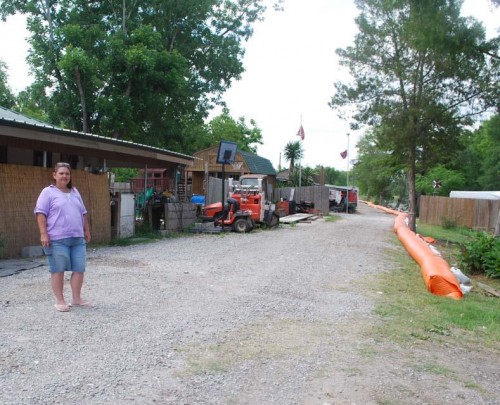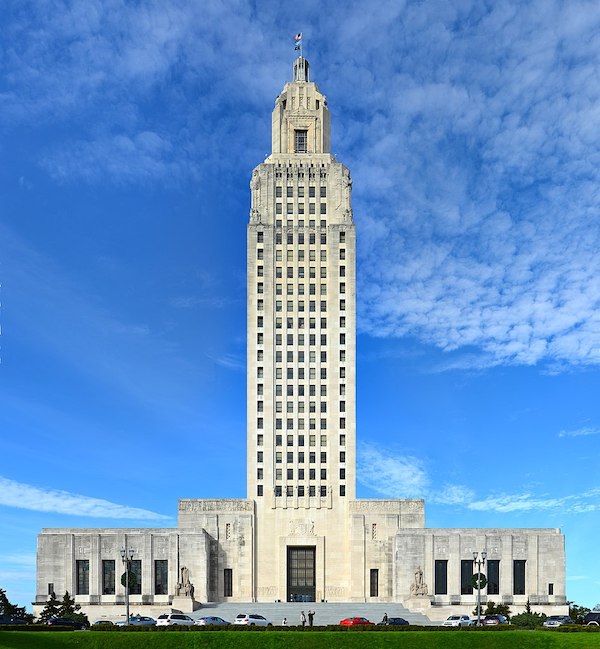
Leo Cavell
May 24, 2011
James Walker
May 26, 2011Robin Thibodeaux planned to purchase flood insurance for her Bayou Black home. Then she learned it would be a $50,000 investment.
The hefty fee wouldn’t have served as a premium payment. Instead, it was what she would have had to pay to elevate her home, which sits 3 and a half feet below sea level, to the 5-foot, insurance-qualifying standard dictated by FEMA’s National Flood Insurance Program.
“My house is not high enough to get insurance, and I tried for the program to get it through the [Homeowner Elevation Grant Program], was denied and I just don’t have $50,000 to pull right on out to lift the house.”
The elevation grant program denied Thibodeaux because her property is not in an area considered susceptible to floods, she said.
“If the government would have helped me, I wouldn’t even be in this situation, but they told me, ‘It doesn’t matter. This bayou is not a flood risk. We’re not in a flood zone. We’re not in a flood area.’ I believe everybody that lives south of Interstate 10 is in a flood zone. I don’t know how that was determined, but the government did that and sent me a letter to that affect.”
Because Thibodeaux lives in a FEMA-designated “X zone,” considered a moderate flood hazard area, her yearly flood insurance payment would be approximately $350 per year. Last week, as she emptied her house into trucks and prepared to evacuate to Gulf Shores, Ala., Thibodeaux described her property’s plight.
Its position makes it more likely that it would flood than most homes in the area. A canal, which is lined with an 8-foot bank opposite her home and curves around the back end of her property before extending throughout Bayou Black and into Gibson, would hold the water at 4 or 5 feet as it encroached upon her house, she said. “We’re completely surrounded.”
When the water begins to rise, she will flee. She will do so with an understanding that her home may take on water and with a constant dread reminding her she does not have flood insurance. She’s not alone.
As diverted water from the elevated Mississippi River begins to bear down on rural Louisiana, the majority of homes in the rushing water’s path are uninsured.
At least 58 percent of the 96,000 occupied dwellings in the Tri-parish area are not insured under FEMA’s National Flood Insurance Program (NFIP). Of the 41,000 flood insurance policies taken out in the three parishes, it is unknown how many are for businesses, so the 58 percent uninsured homes figure is likely higher.
In St. Mary Parish, which sits atop the Atchafalaya River basin, with winding waterways and lakes scattered throughout, 5,997 flood insurance policies are in-force, which would cover just 29 percent of the occupied housing units in the parish. Again, it is unknown how many of these policies cover commercial structures.
The low number of flood insurance policies in St. Mary Parish surprised Louisiana Department of Insurance Commissioner James Donelon.
“I’m a little dubious about your number of 70 percent, because that happens to be the same percent that is uninsured statewide, and I would think St. Mary would have a greater penetration than the state as a whole,” Donelon said.
No matter the homeowner’s zone, Donelon said, flood insurance is a valuable buy.
“Anywhere in the state, low-risk area or below sea level, it’s the best insurance buy a property owner can make in Louisiana, no question about,” the state insurance commissioner said. He added that 25 percent of NFIP payouts are made on homes in areas designated low risk.
Mellissa Alleman handles customer service for the Morgan City insurance agency Preston McIntyre and has seen homeowners reject policies first hand. She attributed the mass declines in coverage to economic reasons, insurance intimidation and, in most cases, a false sense of security that comes when the homeowner is told flood insurance is not required.
“I don’t want this to come out ugly, but they’re not educated about what could happen,” Alleman said. “They don’t get the picture of, ‘Well, flood insurance is an option. I don’t need it.’
“They don’t understand what could happen. Katrina should have been a big, big lesson for everyone to learn,” she continued. “They didn’t take that lesson and learn from it. They just swept it off.”
Alleman said “countless” customers who regret bypassing the policy have swamped the agency with inquiries. Some hope to beat the system, which requires a 30-day probationary period before coverage begins.
“What they’re thinking is, ‘I’m going to go ahead and get this insurance and when it comes into force, well I’m already going to have flood damage, so they’re going to go ahead and cover it,'” Alleman said. “No. It has to be in force the day the incident happens.
The NFIP covers both natural and man-made incidents. It goes into effect when two or more properties or two or more acres that are generally dry become inundated with water.
More than 480,000 policies are in-force in Louisiana, insuring $107 billion worth of property, which ranks the state third behind Texas and Florida in both quantity and amount insured.
-Percentage of Flood Insurance Policies In Effect
Lafourche Parish 14,270 policies (commercial property included) 35,486 occupied homes
St. Mary 5,997 policies (commercial property included) 20,457 occupied homes
Terrebonne 19,919 policies (commercial property included) 40,091 occupied homes
*The percentage of uninsured residential structures is not exact. It is a representation of the minimum amount of uninsured residential structures in each parish. FEMA is unable to distinguish between commercial and consumer policies, and the number of commercial structures in each parish is not available.
** Data compiled by comparing the number of flood insurance policies, as provided by FEMA spokesman Brad Craine, to the number of housing structures reported in the 2010 U.S. Census.
Robin Thibodeaux stands in front of her Bayou Black home. She is one of the many Terrebonne Parish homeowners to not have a residential flood insurance policy. ERIC BESSON










